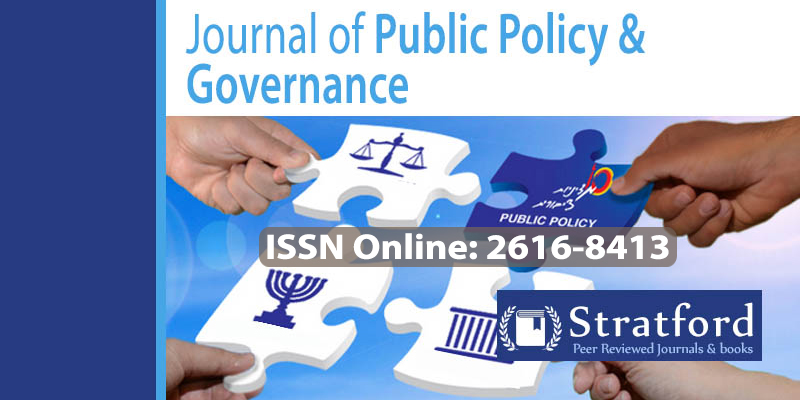Effect of Humanitarian Assistance for Vulnerable Communities on Social Welfare of Refugees in Rwanda: A Case of Mahama Refugee Camp
DOI:
https://doi.org/10.53819/81018102t2139Abstract
Humanitarian assistance continues to assist Rwandan refugees who select to voluntarily repatriate their children. Mahama camp experienced clean water supply which was below standards (at an average of 13.8 liters per person per day as compared to the standard of 20 liters per person per day), there was a lack of school facilities (60 students per classroom), and there were recurrent challenges in maintaining the provision of food assistance, land scarcity resulted in the congestion of refugee camps and limited opportunities for agricultural projects, and reduced support for self-reliance activities, with under 17,000 refugees engaged in income-generating activities during the year. Therefore, they are often very reliant on overseas aid, now they are no longer capable to enhance their resilience skills or preserve support livelihoods. Therefore, this study examined the effect of humanitarian assistance for vulnerable communities on social welfare of refugees in Rwanda. The specific objective of this study was to examine the implementation of humanitarian assistance for vulnerable communities in Mahama Refugee Camp; to assess the satisfaction level in refugees’ welfare and to identify weaknesses in the acquisition of basic needs in Mahama Refugee Camp. The descriptive (quantitative and qualitative) and analytical research design was used in this study; the sample size is 100 respondents from 54000 population and using simple random sampling techniques. The data collected was coded and Statistical Package for Social Science (SPSS) version 20 was used for data entry and analysis, statistical tools were used including frequency counts, percentages, mean and standard deviation. The implementation of humanitarian assistance for vulnerable communities by 4.15 of overall mean, the satisfaction level in Refugee welfare by 4.12 of overall mean and the weaknesses in acquisition of basic needs by 2.9 of overall mean. As recommendation, they should provide way of solving same challenges such as food security, security and water and sanitation.
Keywords: Humanitarian Assistance, Vulnerable Communities, Social Welfare, Mahama Refugee Camp, Rwanda
References
Binnendijk. (2000). Aid, poverty reduction and the 'new conditionality. The Economic Journal, Volume 114, pp.
Collinson, S., & Darcy, J. (2012). Realising protection: the uncertain benefits of civilian, refugee and IDPstatus. London: ODI.
Darcy, J. (2016). Human rights and international legal standards: what do relief workers need to know?Relief and Rehabilitation network. London: Overseas Development Institute.
De Haas, H. (2011). Irregular migration from West Africa to the Maghreb and the European Union: An overview of recent trends. Geneva: Switzerland: International Organization for Migration.
Ducalf, J. (2012). ‘Humanitarian charter and minimum standards in emergency response. Oxford: Oxfam.: final evaluation Somalia.
Gunduz, C. (2014). Does foreign aid reduce poverty? Empirical evidence from nongovernmental and bilateral aid. Washington DC: United Nations.
Hanmer, L., Lensink, R., & H.White. (2013). Infant and child mortality in developing countries: Analysing the data for robust determinants. Journal of Development Studies, 101-118.
Harvey, P., & Lind, J. (2015). Dependency and humanitarian relief: A critical analysis. London.: HPG Research Report 19, Overseas Development Institute.
IASC. (2014). Inter-Agency Humanitarian Evaluation of Large Scale System-Wide Emergencies. Geneva and New York: IASC.
IASC. (2018). Humanitarian Response Review. New York/Geneva: United Nations.
Kauffman, & Collins. (2012). Comparative study of emergency cash coordination mechanisms. Groupe URD: Plaisians.
Kirk, C. (2013). Evaluation of UNICEF’s cluster lead agency role in humanitarian action. New York: UNICEF.
Konyndyk. (2019). People-Driven Response: Power and Participation in Humanitarian Action. Washington: DC: Center for Global Development.
Morrissey, O. (2012). Aid effectiveness for growth and development. UK: ODI Opinions.
Roberts, L. (2012). Measuring the Impact of Humanitarian Health Programmes. London: Overseas Development Institute.
UNDP. (2010). Beyond Scarcity: Power, poverty and the global water crisis. New York.: Human Development Report Office, UNDP, United Nations.
UNHCR. (2018). Africanl Refugee Response Plan. Kigali: Republic of Rwanda
Verschoor, A. (2012). Aid and the poverty-sensitivity of the public sector budget. London: Department of Economics, University of Sheffield.
Walsh, M. (2016). European Civil Protection and Humanitarian Aid Operations. London: International Refugee Rights Initiative.
Wells. (2015). Development as freedom. USA: Oxford University Press.
WHO. (2019). Management of severe malnutrition: a manual for physicians and other senior health workers. Geneva.: World Health Organization.
World-Bank. (2012). Building a Concensus for Development Assistance: A Case for Aid. Report from the Commission to the European Parliament: introduced by James D Wolfensohn
Zyck, S., & Krebs, H. (2015). Localising humanitarianism: improving effectiveness through inclusive action. London: ODI and the British Red Cross.


